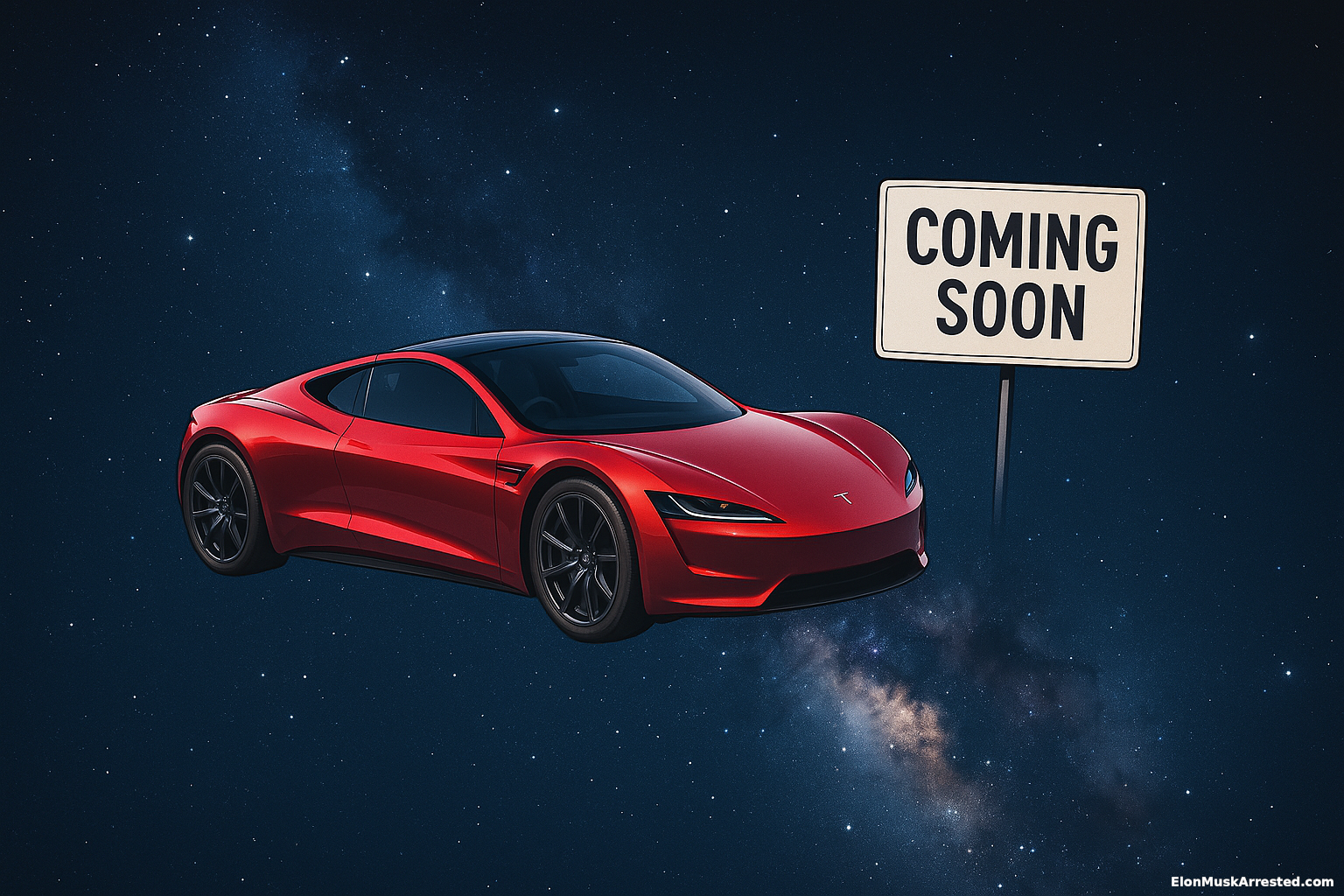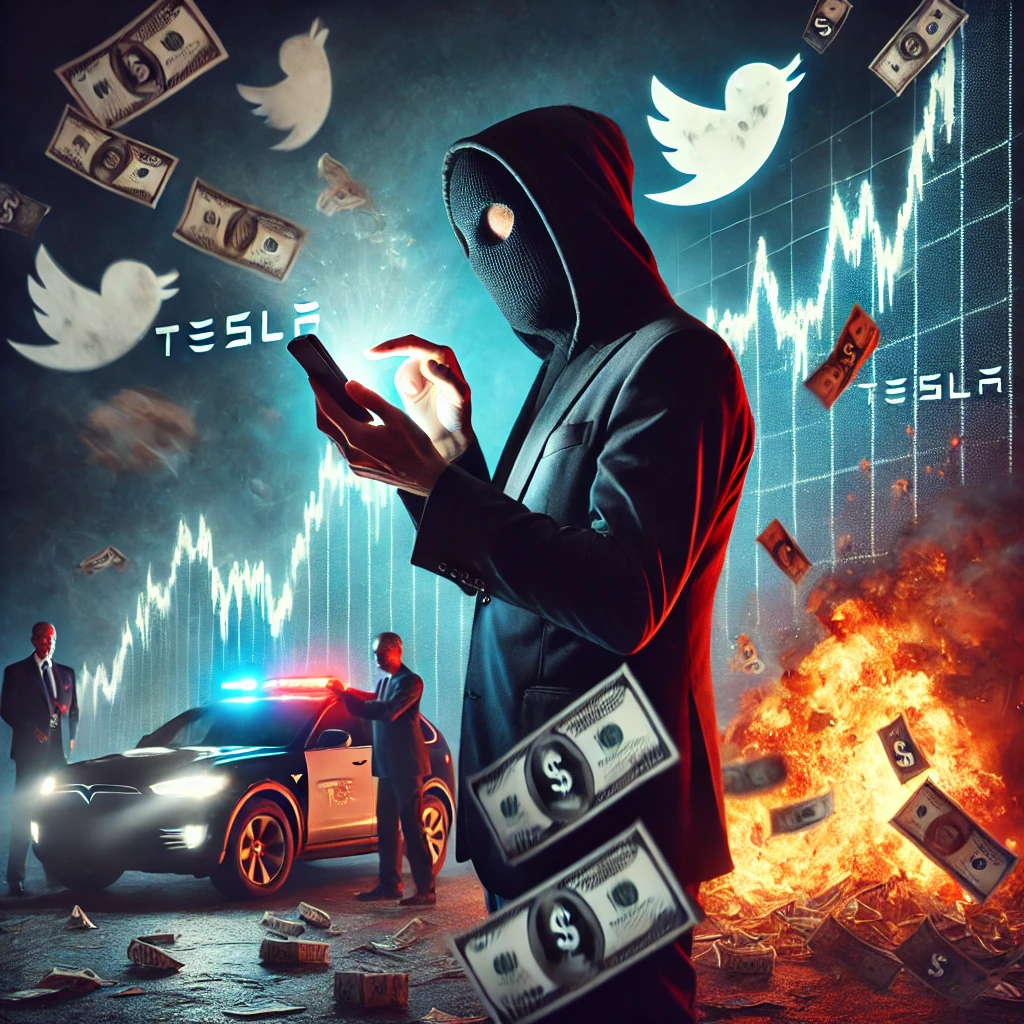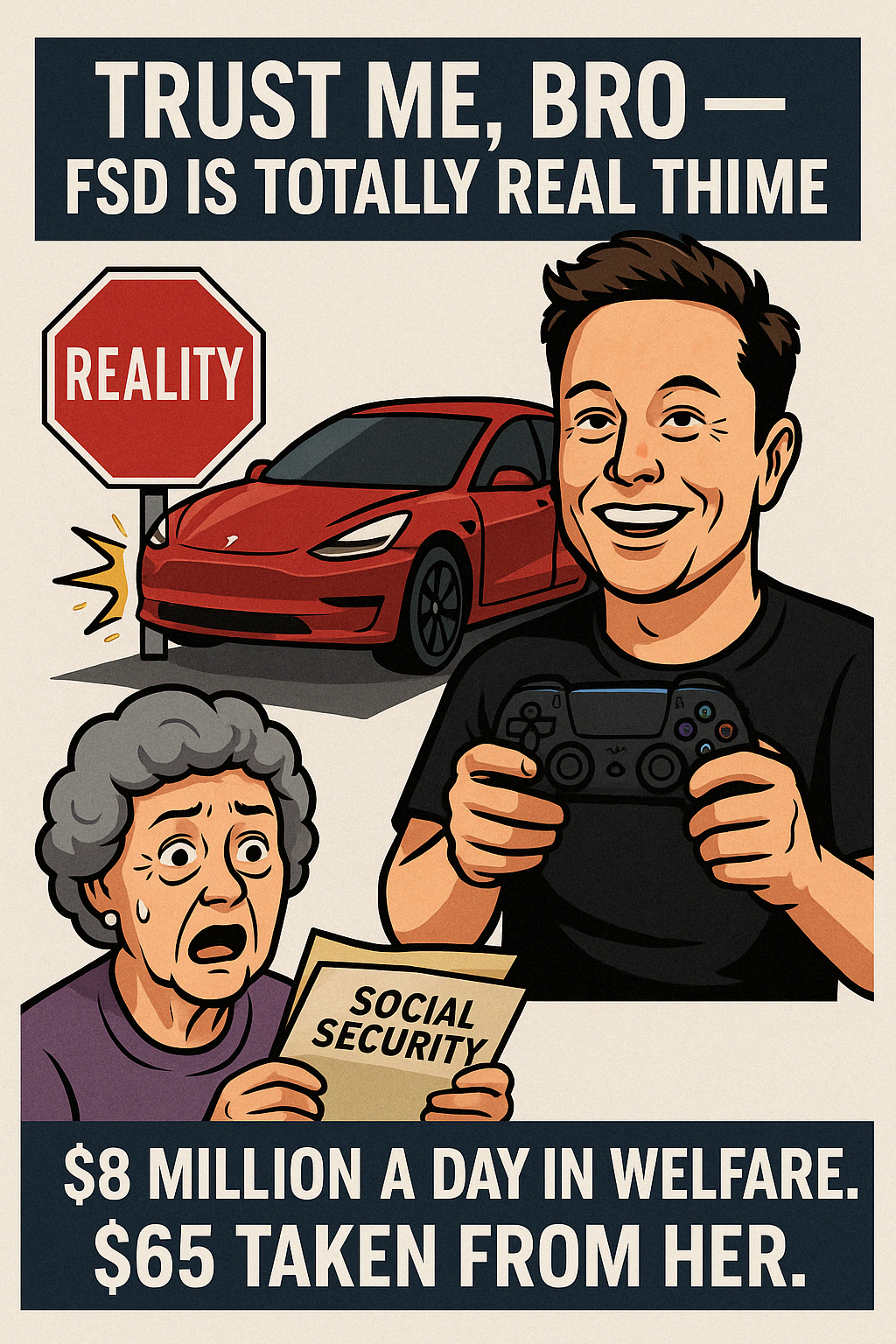
When Tesla unveiled the new Roadster 2 in November 2017, Elon Musk promised it would be the fastest production car in history.
- 0–60 mph in 1.9 seconds
- 0–100 mph in 4.2 seconds
- Top speed over 250 mph
- A 620-mile range
- And, incredibly, optional cold gas thrusters to enable small hops like a DeLorean from Back to the Future
It’s now seven and a half years later.
There is still no car.
The Roadster Reservation Scheme
At launch, Tesla collected $250,000 each from 1,000 early buyers — totaling $250 million — just for the Founders Series reservations.
Later, Tesla accepted additional Roadster deposits of $50,000 or more from regular customers.
Meanwhile:
- The Roadster 2 has never entered production
- No credible prototypes have been delivered
- No working models capable of Musk’s promised performance have ever been independently tested
As of 2025, Tesla is reportedly holding around $1.1 billion in customer deposits for undelivered products like the Roadster 2, the Semi, and the long-delayed Cybertruck variants.
Why Hasn’t It Happened?
1. The Specs May Be Physically Impossible
- Achieving 620 miles of range at hypercar performance levels would require a battery far larger and heavier than anything Tesla has today.
- The 1.9-second 0–60 time is plausible in a drag strip EV (with no regard for real-world usability), but maintaining that safely in a street car with mass production reliability is another matter entirely.
- A top speed of 250+ mph with current Tesla battery tech would destroy range and require serious high-speed aerodynamics and cooling Tesla has never built before.
2. The “Cold Gas Thruster” Hype Was Nonsense
- Musk suggested that optional cold gas thrusters would allow the Roadster to “hop” briefly.
- In reality, cold gas thrusters would require huge air tanks, compressors, plumbing, and safety measures — adding hundreds of pounds and consuming massive amounts of space inside the car.
- The idea of leaping a full-sized Roadster off the ground safely for consumers is not just implausible — it’s physically ridiculous without fundamentally redesigning the vehicle as a one-off showpiece.
3. The Engineering Focus Was Always Elsewhere
- Tesla’s resources went into the Cybertruck, Semi, and scaling Model Y production instead.
- The Roadster 2 was left as a PR tool — a shiny object used to pump deposits and buy time.
The Bigger Picture: Holding Customer Funds
Tesla’s business model has evolved to quietly depend on holding customer deposits for undelivered products:
| Product | Delivery Status | Customer Funds Collected |
|---|---|---|
| Roadster 2 | Still Unproduced | $250M+ upfront |
| Tesla Semi | Severely Limited Deliveries | $5,000–$20,000 per reservation |
| Cybertruck Tri-Motor & Quad-Motor | Not available as promised | $100 deposits + variant upgrades |
Tesla reported $1–1.1 billion in customer deposits in its recent financials — cash that cushions quarterly earnings without delivering the cars attached to those deposits.
Conclusion: A $250,000 Postcard From 2017
The Tesla Roadster 2 has become less of a car and more of a myth — a symbol of Musk’s style of grandiose promises detached from technical and production realities.
Meanwhile, customers’ money sits with Tesla, earning interest or helping fund unrelated operations.
There may one day be a new Tesla Roadster — but it almost certainly won’t match the fantasy specs Musk promised in 2017.
And for many deposit holders, the dream they bought into has already expired.
Discover more from
Subscribe to get the latest posts sent to your email.




